 1983 Peugeot 205 I (741A/C) Dimensions, Size & Specs
1983 Peugeot 205 I (741A/C) Dimensions, Size & SpecsMeasurements of the 1983 Peugeot 205 I, engineered for optimal performance and comfort
| Dimensions | |
|---|---|
| Length: | 3705 mm145.9 in12.2 ft |
| Width: | 1572 mm61.9 in5.2 ft |
| Height: | 1373 mm54.1 in4.5 ft |
| Trunk Capacity: | 216 liter7.6 cu ft |
| Trunk Capacity (Max): | 546-564 liter19.3-19.9 cu ft |
| Weight Specifications | |
| Curb Weight: | 740-860 kg1631-1896 lbs |
| Maximal permitted Weight: | 1140-1330 kg2513-2932 lbs |
| Tire Specifications | |
| Rims Sizes: |
|
| Tire Sizes: |
|
The Peugeot 205 I (741A/C generation), produced from 1983 to 1987, is a quintessential compact hatchback renowned for its urban agility and practical design. Measuring 3705 mm (145.9 inches) in length, 1572 mm (61.9 inches) in width, and standing 1373 mm (54.1 inches) tall, the 205 I fits comfortably within the small car segment, offering easy maneuverability in tight city environments.
The vehicle's curb weight ranges between 740 and 860 kilograms (1631 to 1896 pounds), contributing to efficient fuel consumption and nimble handling typical of compact cars of its era. Its maximum gross weight spans from 1140 to 1330 kilograms (2513 to 2932 pounds), allowing for moderate load capacity without compromising stability.
One of the Peugeot 205 I’s standout features is its well-utilized luggage space, providing 216 liters (7.6 cubic feet) of storage with all seats in place. This expands substantially to between 546 and 564 liters (19.3 to 19.9 cubic feet) when the rear seats are folded, making it surprisingly versatile for a small hatchback. This capacity ensures practicality for daily errands and occasional travel with extended cargo needs.
The 205 I typically rides on 13 to 14 inch rims, with supported tire sizes including 135/80 R13, 165/70 R14, 165/70 R13, and 145/70 R13, balancing ride comfort and road grip to suit various driving conditions.
Overall, the Peugeot 205 I (741A/C) embodies the classic traits of an 1980s European city car, merging compact dimensions with functional interior space. Its size and weight specifications place it as a competitive option during its production years, suitable for drivers seeking an efficient, easy-to-drive hatchback with adaptable cargo solutions.
Discover the standout features that make the 1983 Peugeot 205 I a leader in its class
Have a question? Please check our knowledgebase first.
The Peugeot 205 I (741A/C) hatchback, manufactured from 1983 to 1987, measures 3705 mm (145.9 inches) in length, 1572 mm (61.9 inches) in width, and 1373 mm (54.1 inches) in height. These compact dimensions contributed to its popularity as an urban-friendly vehicle, balancing maneuverability and practicality.
The Peugeot 205 I (741A/C) hatchback has a curb weight ranging from 740 kg to 860 kg (1631 to 1896 lbs), depending on the specific model and trim. The maximum permitted weight (gross vehicle weight rating) is between 1140 kg and 1330 kg (2513 to 2932 lbs), which includes passengers and cargo.
With rear seats upright, the Peugeot 205 I offers 216 liters (7.6 cubic feet) of luggage space. Folding down the rear seats expands the available cargo volume to between 546 and 564 liters (19.3 to 19.9 cubic feet), allowing for greater flexibility when transporting bulky items or increased cargo load.
The Peugeot 205 I (741A/C) came equipped with rim sizes of 13 and 14 inches. Tire sizes suitable for this generation include 135/80 R13, 165/70 R14, 165/70 R13, and 145/70 R13. These options allowed for a variety of driving experiences, balancing ride comfort and handling performance.
Yes, the Peugeot 205 I’s compact dimensions (3705 mm in length and 1572 mm in width) make it ideal for fitting inside a standard residential garage, which typically measures around 2400 to 3000 mm in width and 4800 to 6000 mm in length. Its relatively low height of 1373 mm also facilitates easier storage.
The Peugeot 205 I was actually a fresh introduction rather than a direct successor to a similar hatchback; it replaced the smaller Peugeot 104. The 205 I was more modern, slightly larger, and more spacious than the 104, offering improved interior room and cargo capacity, which helped it cater better to the growing hatchback market of the 1980s.
Comparing the Peugeot 205 I to contemporaries like the Volkswagen Golf Mk2 or Ford Fiesta Mark II, the 205 was more compact in length and width. For example, the Golf Mk2 measured about 4,130 mm in length and 1,690 mm in width, making the 205 notably smaller and easier to maneuver in urban environments, while still providing practical interior space.
The Peugeot 205 I has curb weight ranging from 740 kg to 860 kg (1631 to 1896 lbs) depending on the trim and equipment level. Lighter models tend to offer more agile handling and better fuel economy, while heavier variants may provide slightly better road stability but can be less nimble in city driving.
Despite its compact exterior dimensions, the Peugeot 205 I was designed to maximize interior space for passengers. The efficient use of cabin space allows comfortable seating for four adults, with adequate headroom and legroom given its class at the time. Its hatchback design adds versatility, making it practical for daily use.
The Peugeot 205 I offered rim options of 13 and 14 inches paired with tire sizes including 135/80 R13, 145/70 R13, 165/70 R13, and 165/70 R14. Smaller rims with taller tires usually provide a more comfortable ride with better absorption of road imperfections, while larger rims with lower profile tires enhance handling and cornering capabilities at the expense of comfort.
Discover similar sized cars.
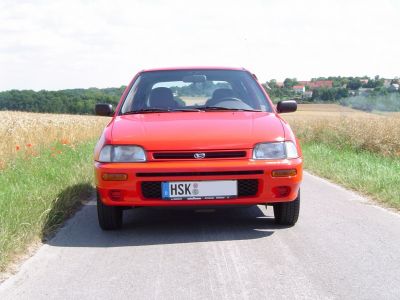
| Production: | 1993-2000 |
|---|---|
| Model Year: | 1993 |
| Length: | 3750-3780 mm147.6-148.8 in |
| Width: | 1620 mm63.8 in |
| Height: | 1390-1410 mm54.7-55.5 in |
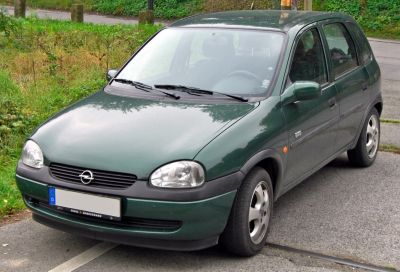
| Production: | 1997-2000 |
|---|---|
| Model Year: | 1997 |
| Length: | 3740 mm147.2 in |
| Width: | 1610 mm63.4 in |
| Height: | 1420 mm55.9 in |

| Production: | 1993-2000 |
|---|---|
| Model Year: | 1994 |
| Length: | 3740 mm147.2 in |
| Width: | 1610 mm63.4 in |
| Height: | 1420 mm55.9 in |

| Production: | 1993-2000 |
|---|---|
| Model Year: | 1993 |
| Length: | 3729 mm146.8 in |
| Width: | 1610 mm63.4 in |
| Height: | 1420 mm55.9 in |
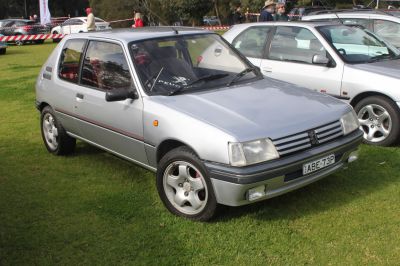
| Production: | 1987-1998 |
|---|---|
| Model Year: | 1983 |
| Length: | 3705 mm145.9 in |
| Width: | 1560-1572 mm61.4-61.9 in |
| Height: | 1355-1375 mm53.3-54.1 in |
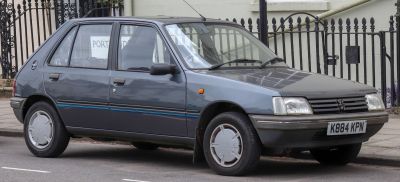
| Production: | 1987-1998 |
|---|---|
| Model Year: | 1987 |
| Length: | 3705 mm145.9 in |
| Width: | 1560-1570 mm61.4-61.8 in |
| Height: | 1355-1375 mm53.3-54.1 in |
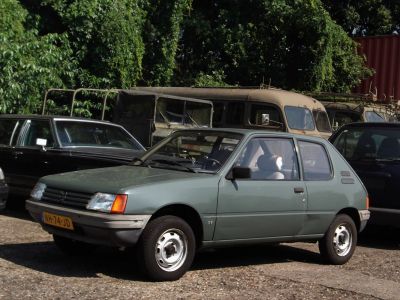
| Production: | 1983-1987 |
|---|---|
| Model Year: | 1983 |
| Length: | 3705 mm145.9 in |
| Width: | 1572 mm61.9 in |
| Height: | 1373 mm54.1 in |

| Production: | 1993-2000 |
|---|---|
| Model Year: | 1993 |
| Length: | 3740 mm147.2 in |
| Width: | 1610 mm63.4 in |
| Height: | 1420 mm55.9 in |
